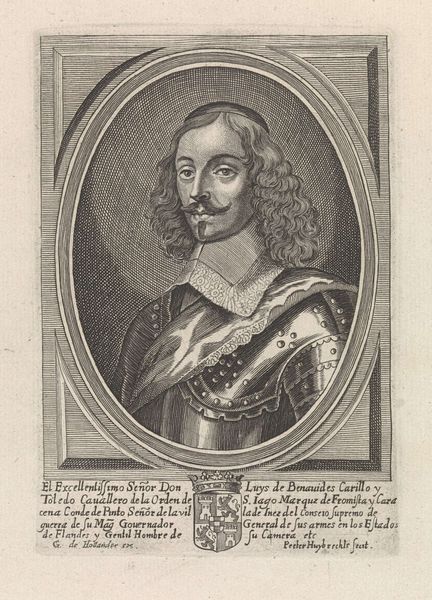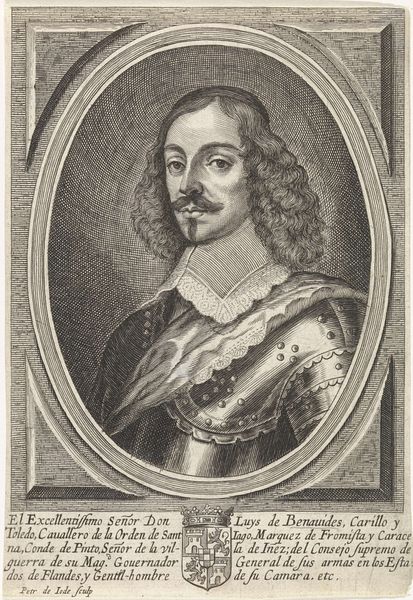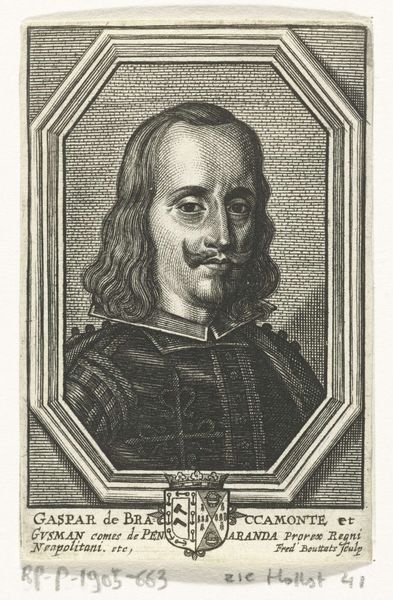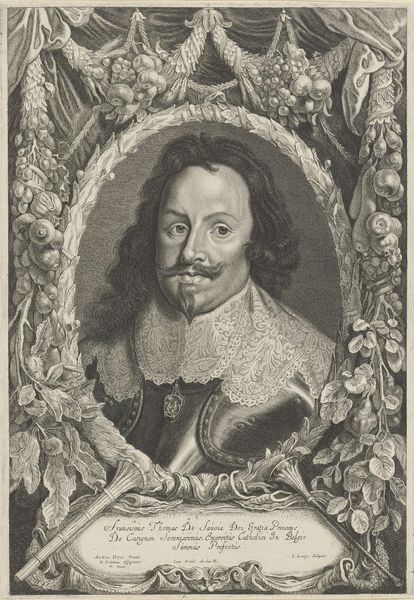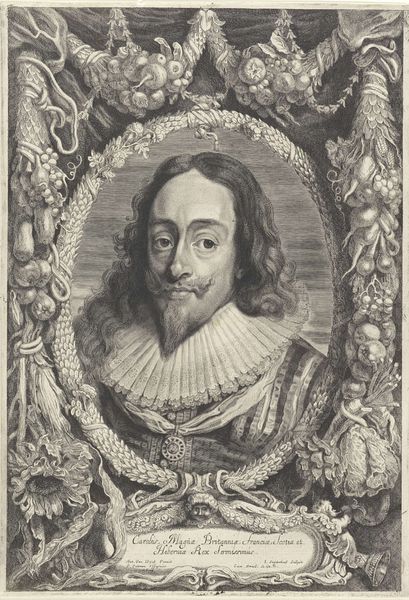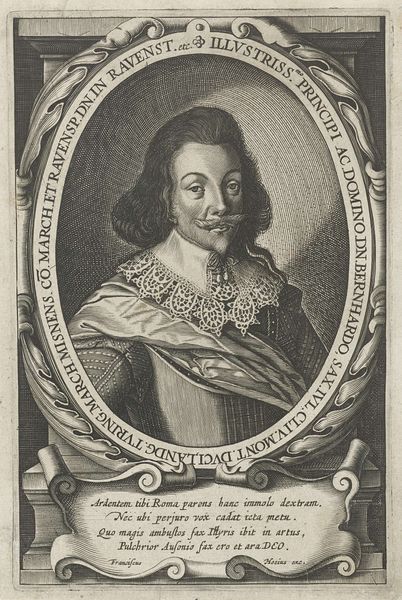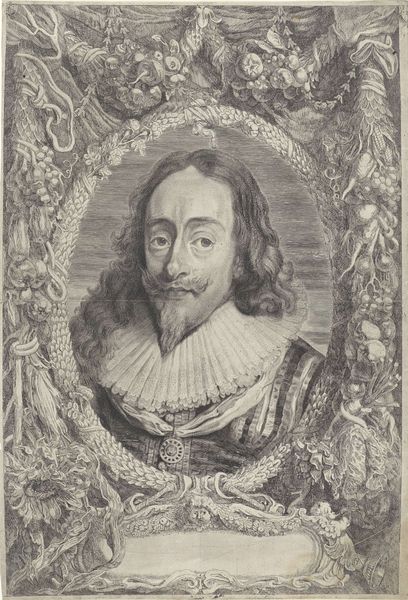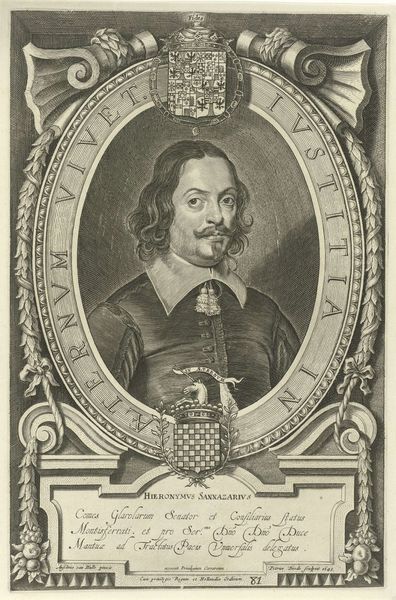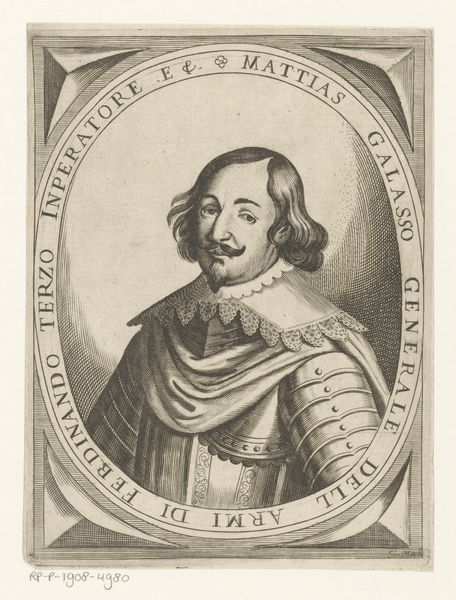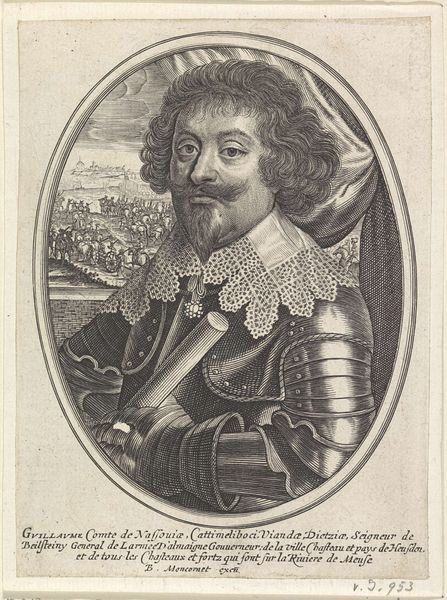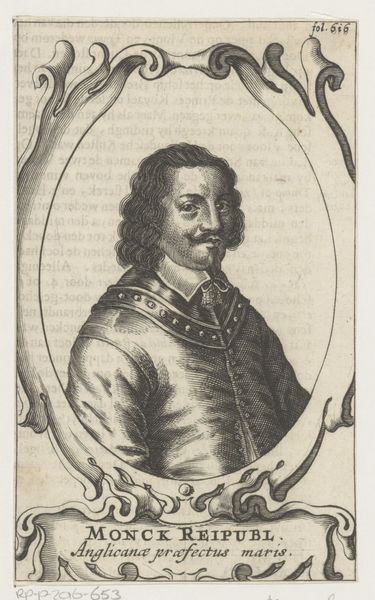
etching, engraving
#
portrait
#
baroque
#
etching
#
old engraving style
#
caricature
#
line
#
portrait drawing
#
history-painting
#
engraving
Dimensions: height 126 mm, width 79 mm
Copyright: Rijks Museum: Open Domain
Editor: Here we have Frederik Bouttats' etching, "Portret van Ludovicus ab Haro," created sometime between 1646 and 1676. There's a striking formality to it, a very controlled presentation of power. What aspects of this piece do you find most compelling? Curator: It's fascinating how Bouttats uses the visual language of power – the armor, the inscription, the ornate frame – to construct and reinforce the subject's social standing. But let’s look closer: what contradictions might lie within this image? How might we read this portrait as something other than a straightforward celebration of aristocracy? Editor: Well, the line work is quite pronounced, almost exaggerated, especially in the facial features. Could that be interpreted as a subtle critique? Curator: Precisely! Think about the role of portraiture during this period. While ostensibly meant to convey status, the very act of representation opens up possibilities for commentary. What if the artist is subtly highlighting the constructed nature of power, almost hinting at the artifice behind the aristocratic image? Editor: So, the very act of creating a portrait, even one seemingly straightforward, could be seen as engaging with the social and political climate? Curator: Absolutely. The artist, through the very act of depiction, engages in a dialogue with, or perhaps even subtly subverts, the prevailing power structures. The pronounced lines you noted might not just be a stylistic choice but a commentary on the performative nature of identity and status within a hierarchical society. And it makes one wonder what that commentary meant to both Bouttats and his audience at that time. Editor: That completely reframes how I see it. It's not just a portrait of a nobleman; it's a statement about nobility itself. Thank you! Curator: My pleasure! Looking closely and asking questions allows us to find unexpected political meaning in artworks across time and media.
Comments
No comments
Be the first to comment and join the conversation on the ultimate creative platform.
